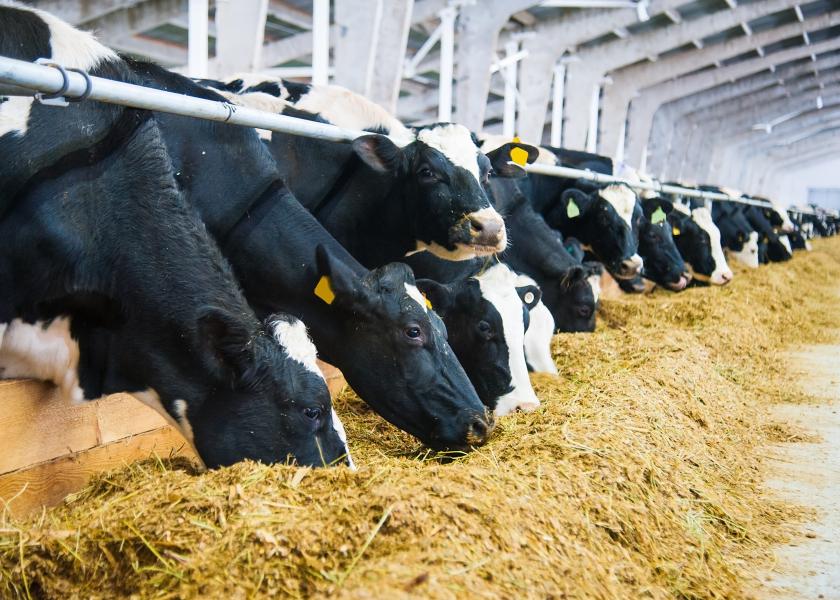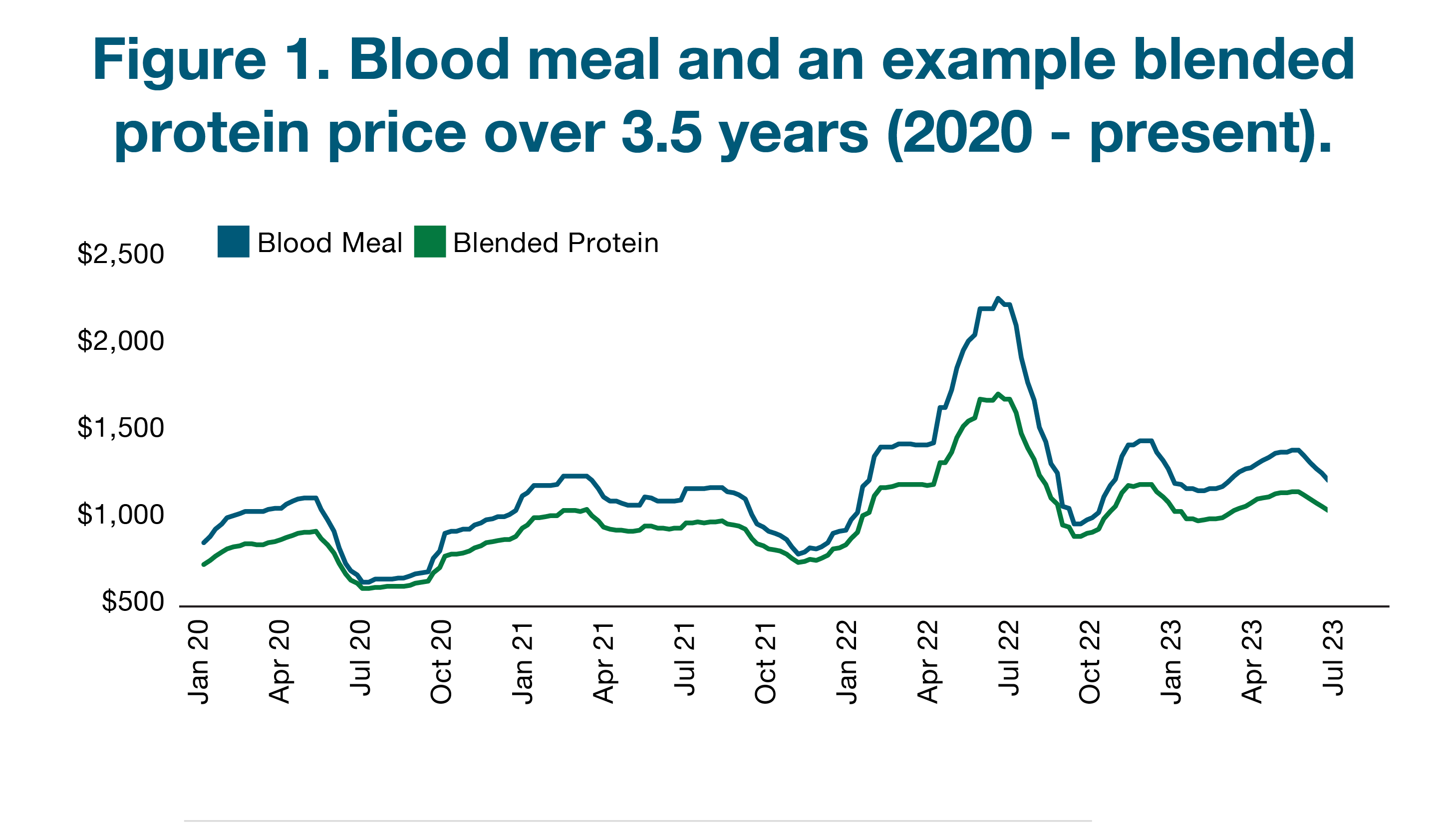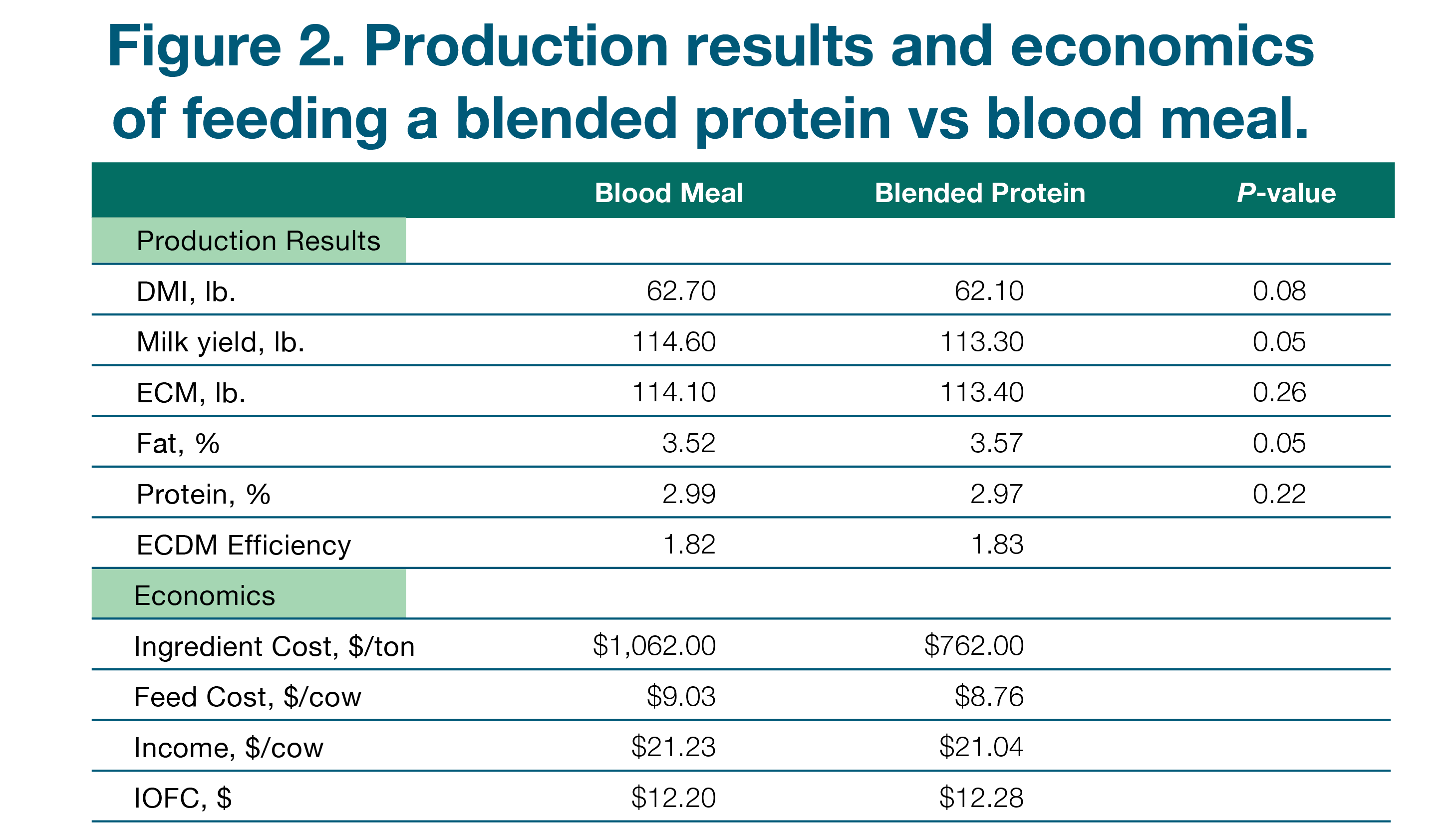Is There a Better Option Than Blood Meal? The Case for Blended Proteins in Dairy Rations

High producing cows require large amounts of metabolizable protein (MP) and amino acids to support production. Historically, blood meal has been a staple in these diets as a concentrated source of both MP and amino acids such as lysine and histidine. Despite the potential value commodity blood meal can provide though, it does present specific challenges to dairies.
Budgeting through price volatility
Blood meal prices can be a roller coaster. Many are likely familiar with the record high blood meal prices in the summer of 2022, where the price soared to over $2,200/ton and then quickly dropped back to around $900/ton over the course of a couple of months.
Price volatility over that time frame was not limited to blood meal alone either. Other MP sources such as soybean meal and heat-treated soy also experienced rapid price changes, rising and then falling by approximately $100/ton.
Dealing with the inconsistency of nutrient variability
Nutrient variability in commodity blood meal has also been well established, with many different factors affecting it. The drying process is the most critical, with temperature and duration both affecting the final product. The heating of blood meal is critical to establishing the high rumen undegradable protein levels (RUP) desired, but too high of a temperature or too long at temperature can lead to reduced digestibility, particularly of sensitive amino acids like lysine.
With recent low milk prices and high feed costs, some dairy producers have turned solely to plant proteins as sources of RUP; however, as mentioned above, these products are not immune to pricing fluctuations. They also experience nutrient variability and are not nearly as concentrated a source of MP and amino acids as blood meal.
So what product hits the sweet spot? To combat these challenges, many producers have had great success relying on blended bypass protein options.
The case for blended proteins
Blended proteins can provide the same RUP and amino acids that nutritionists traditionally turn to blood meal for, while also providing improved product consistency and pricing insulation compared to single ingredient options. As an example, since 2020, commodity blood meal has averaged around $1,150/ton. During the same time, a blended protein, designed to deliver similar amino acids and MP averaged around $975/ton.

Blended proteins accomplish this through diversification of ingredients, including a variety of high-quality animal rendered byproducts, plant proteins and rumen protected amino acids. Blended proteins also undergo a higher level of quality control than single ingredients sold as commodities. This benefit, along with the use of multiple ingredients at lower inclusion rates, leads to reduced nutrient variation in blended proteins.
In addition to mimicking the amino acid profile of blood meal, custom blended proteins can also be used to deliver amino acids beyond lysine and histidine typically associated with blood meal. Traditionally, methionine and lysine have been the only amino acids considered when balancing a ration, with some emphasis more recently being applied to histidine. However, evidence continues to mount that paying attention to all 10 of the essential amino acids will allow nutritionists to drive milk and component yield most economically.
The NASEM 2021 Nutrient Requirements of Dairy Cattle — a comprehensive analysis of nutrition research and ration formulation suggestions — supports this concept by identifying five amino acids that contribute to their milk protein yield prediction model. These five amino acids are methionine, lysine, isoleucine, leucine and histidine. Work out of Virginia Tech University over the last several years also supports the value of balancing for amino acids other than lysine, methionine and histidine. In one trial, researchers were able to elicit milk protein increases by independently supplementing (through jugular infusions) either a blend of methionine, lysine and histidine or a blend of isoleucine and leucine. When all five amino acids were supplemented, milk protein yield responded in an additive fashion.
A recent commercial dairy trial viewed the concept through a budgetary lens. The trial compared the production and economics of blood meal vs. a blended protein. The blended protein was designed to deliver a similar level of MP and metabolizable energy milk as blood meal when included in the diet at an equal rate. However, the blended protein was designed to deliver approximately 7% less lysine and histidine and 20% more branch chain AA (isoleucine, leucine, valine) than book-value blood meal.
Production was very similar between the blood meal and blended protein treatments; however, the blended protein proved more economical. Cows fed the protein blend did consume 0.6 lb. less feed and produced 0.8 lb. less energy corrected milk compared to the blood meal treatment, resulting in equivalent energy corrected dry matter efficiency between the two treatments. Historically, the price of blood meal has been $300 more than that of the blended protein fed in the trial. This combined with slightly reduced intake more than offset the minor reduction in milk yield. The result? A substantial net income over feed cost (IOFC) increase of $0.08/cow/day with the blended protein.

As feed prices become ever more volatile, managing ingredient variability, nutrient profile and cost becomes increasingly important. Blended protein products based on high-quality animal rendered byproducts, plant proteins and rumen protected amino acids provide nutritionists and producers another tool to do just that.







